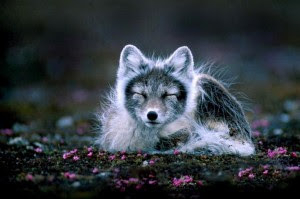From the post at Earth Sky:
At the end of each year, the National Oceanic and Atmospheric Administration (NOAA) releases a report card on the state of the Arctic. In 2012, NOAA reports record low levels of sea ice extent, lower than we’ve seen before since the satellite era began in 1979. Plus, in June 2012, the Arctic experienced record low snow extent across the region. Greenland saw extreme melting during the summer of 2012, and the warmer temperatures and decreasing ice provided massive phytoplankton to grow. NOAA scientists said that air temperatures were on a par with the (relatively high) temperatures of the last decade, leading to, among other things, an increase in the length of the growing season along with tundra greenness in the Arctic. Climate models suggest that, in a warming climate, high latitudes such as the Arctic will be affected first, and so it seems to be. The 2012 Arctic Report Card is a peer-reviewed report that consists of 141 authors from 15 countries. If you ask a scientist who travels periodically to the Arctic or across Greenland, he or she will tell you that the landscape there is changing dramatically from year to year.
 |
| Arctic fox at Svalbard, Norway. In Fennoscandia, fewer than 200 individuals are estimated to remain. |
We, as a species, are nothing short of criminal.
